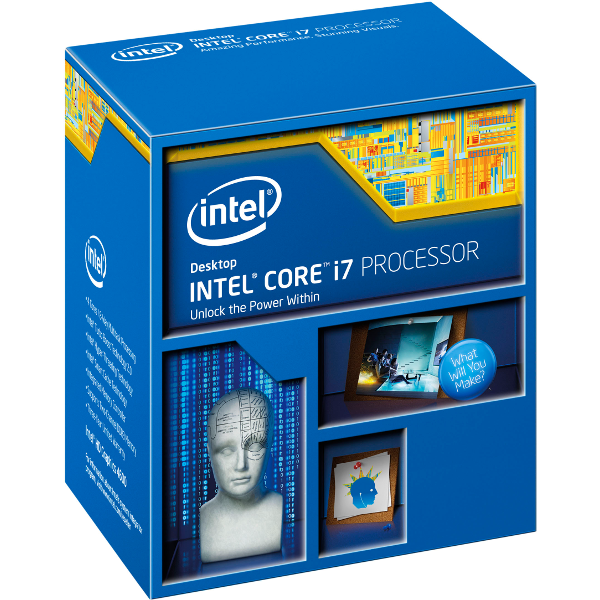Intel Core i7-5960X, -5930K And -5820K CPU Review: Haswell-E Rises
Star Swarm, Thief, Tomb Raider, And WoW
Star Swarm Stress Test
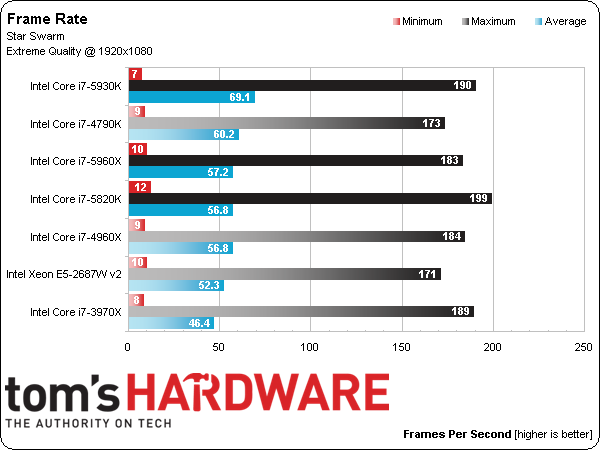
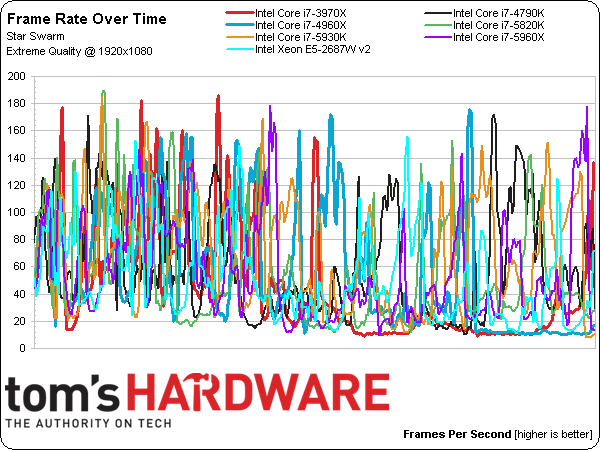
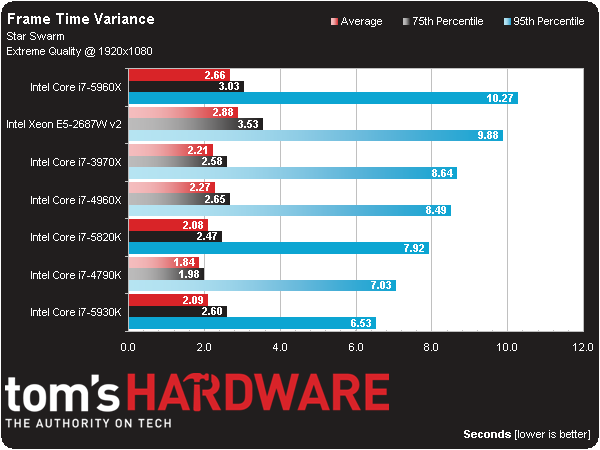
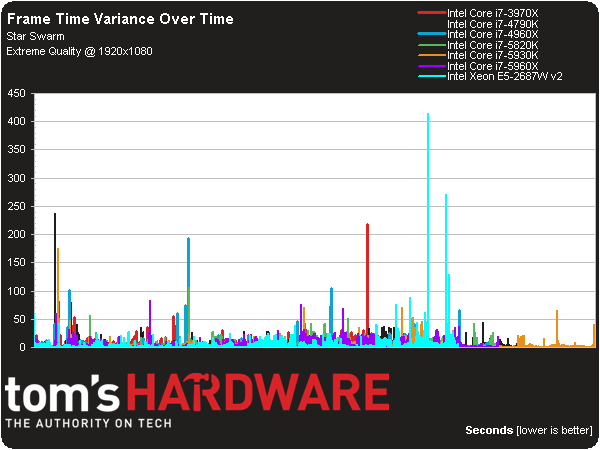
Given AMD’s use of the Star Swarm demo to show how Mantle alleviates CPU dependency, we hoped to use the DirectX-based build for the opposite purpose. But our frame rate over time graph is downright frenetic. It’s hard to know whether a 300-second sample accurately pits these platforms against each other.
To be fair, Oxide Games concedes to the non-deterministic nature of its stress test. It’s the same issue we face trying to benchmark Arma 3 and Battlefield 4’s multi-player components—as soon as you involve the AI calculations needed to tax a processor, variability starts affecting the results. Removing this would shift the bottleneck back over to graphics.
Thief
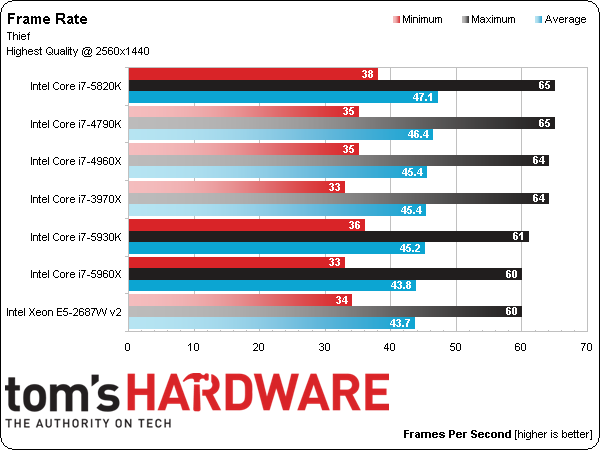
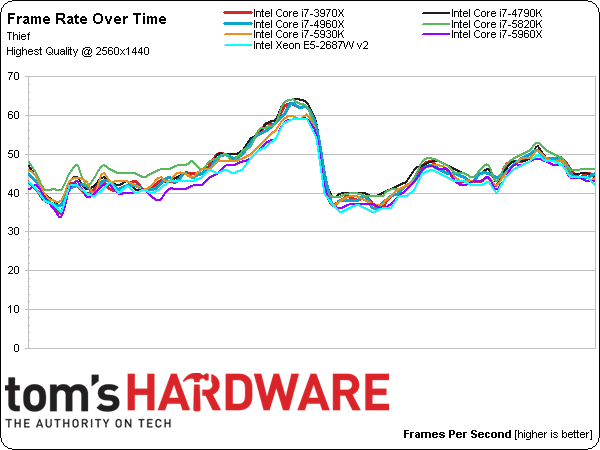
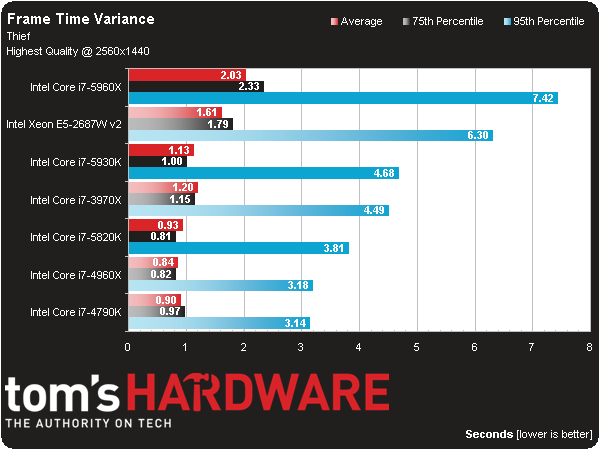
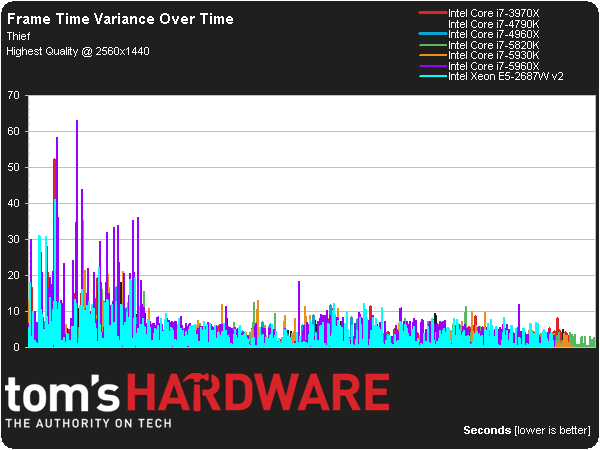
The Core i7-5820K shows up at the top of another gaming chart, again followed by Core i7-4790K. Not that the results in Thief are particularly telling. All of these CPUs are fast enough to keep up with a single GeForce GTX Titan.
Tomb Raider
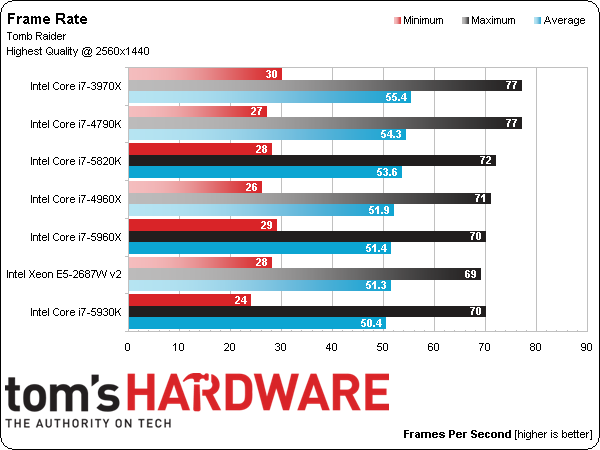
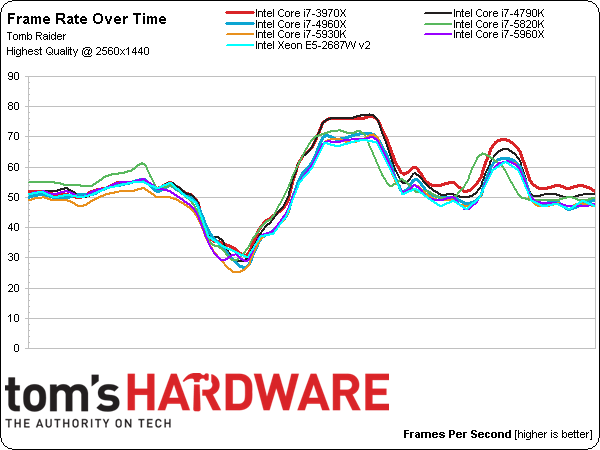
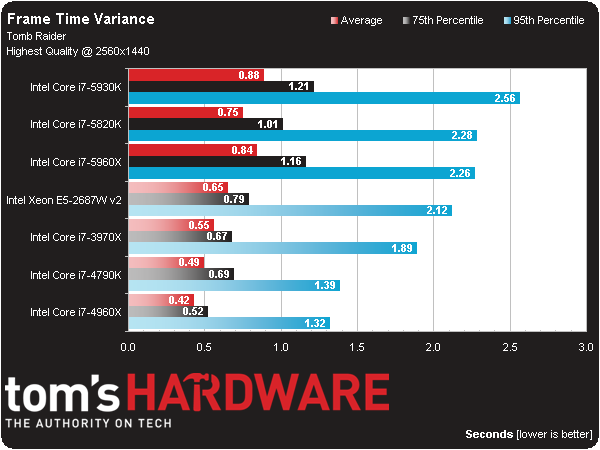
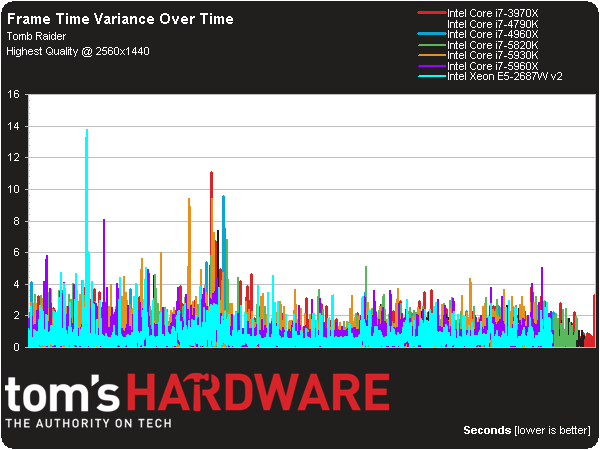
Tomb Raider has the -4790K on top of the -5820K, though both CPUs trail Intel’s Core i7-3970X. In reality, there’s just no way you’d be able to distinguish between any of these platforms, particularly considering their low frame time variance numbers.
World of Warcraft
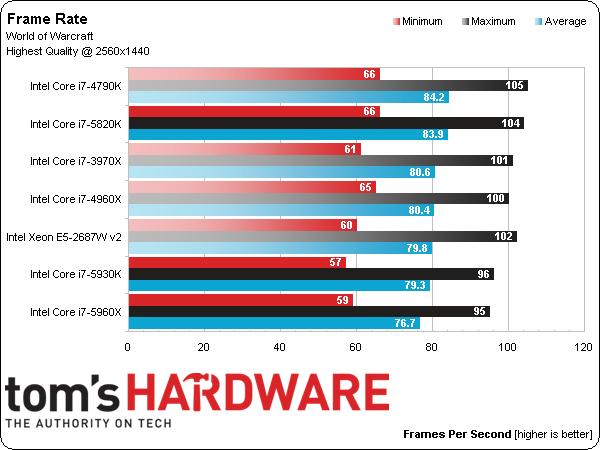
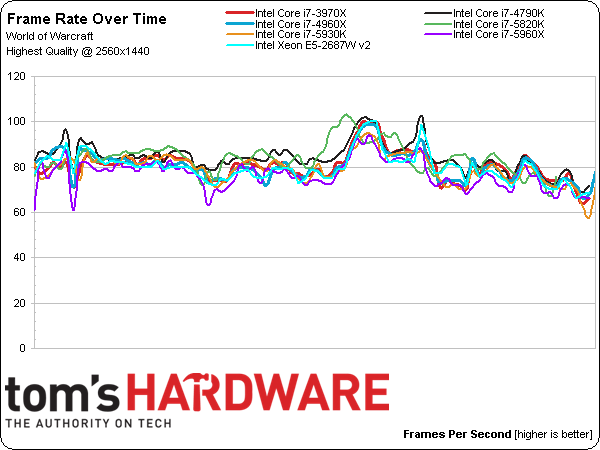
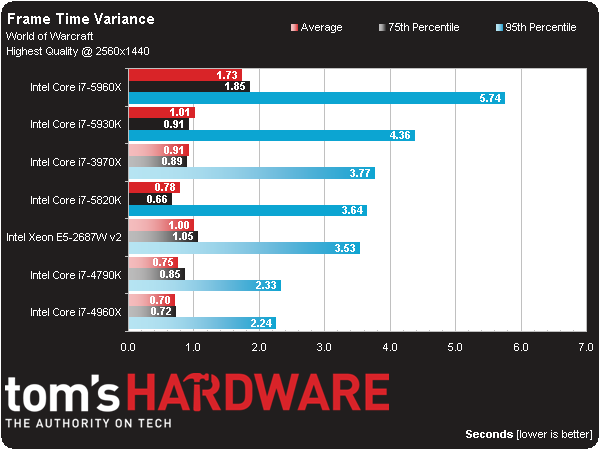
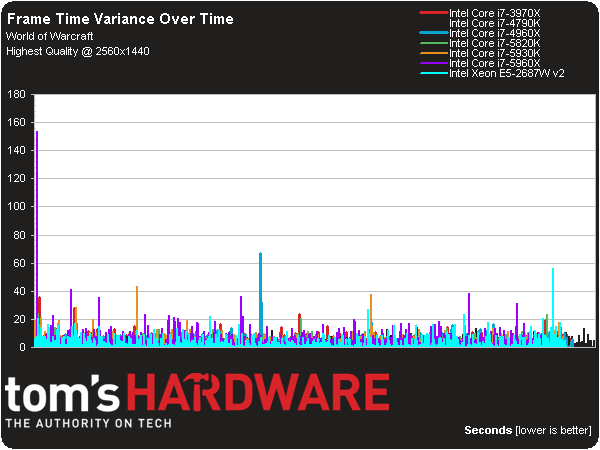
WoW is another game known for exaggerating platform characteristics. And you can add it to the list of titles particularly fond of Intel’s Core i7-5820K, with the -4790K not far behind. Flip through to the frame rate over time chart, and you’ll see a tight grouping through our benchmark run.
If anything, the Core i7-5960X’s lower clock rate negatively affects its frame time variance result. The same holds true in almost every other game benchmark, too.
Get Tom's Hardware's best news and in-depth reviews, straight to your inbox.
Current page: Star Swarm, Thief, Tomb Raider, And WoW
Prev Page Battlefield 4, Grid 2, And Metro: Last Light Next Page Power, In Depth: Stock Clock Rates-
B4vB5 Chris and Igor @ TomsHW,Reply
Bit disappointed to not see a comparison with the Xeon E5-1650v2(or 1660v2), as the 2600 is a bit overkill comparing prices. Some of us just need a workstation with ECC ram and not just a free-for-all(ie someone else is paying) Xeon 2600 fest. -
JamesSneed Out of curiosity why were so many of the gaming tests only done at 2560x1440? Seems like you would be more GPU bound at this resolution. I'm not sure it really matters but I do like gaming at 1080p for the very high frame rates was curious if these would push frame rates higher. Otherwise nice review.Reply -
ohim Reply14063555 said:Affordable 8-cores from Intel are finally coming. Awesome.
1000$ is affordable to you ? :))
14063653 said:Out of curiosity why were so many of the gaming tests only done at 2560x1440? Seems like you would be more GPU bound at this resolution. I'm not sure it really matters but I do like gaming at 1080p for the very high frame rates was curious if these would push frame rates higher. Otherwise nice review.
Though you have a point here, the guy buying such CPUs most likely will game at above 1080p .. but this would have implied using 2 GPUs at least in the test. -
chiefpiggy Why do they call these their "5th generation" of Intel core processors if they're refreshes of the Haswell processors? I get that they have revolutionary technology within but with the release of broadwell so soon I doubt that anyone would buy these processors..Reply -
envy14tpe I need this system to play Minecraft. with that aside, Intel finally has made a jump in i7s value and performance.Reply -
srap "Single-threaded software is so last decade, though."Reply
I have a hunch that we will never see anything like this in the comment sections of AMD reviews. Not sure why :D -
CaptainTom Yeah the real winner of a cpu here is definitely the 5820K. If I were building now, that is what I would use.Reply
